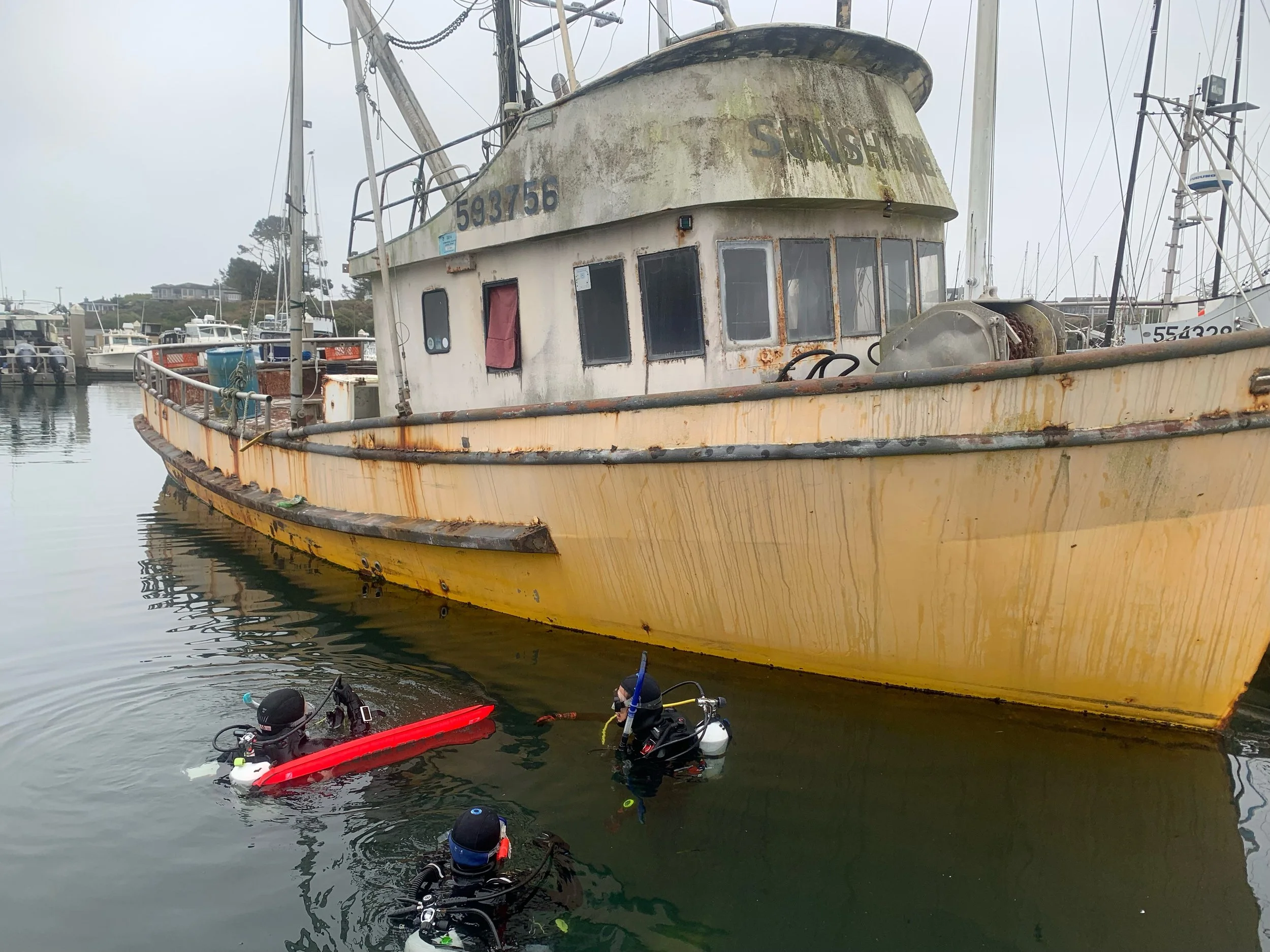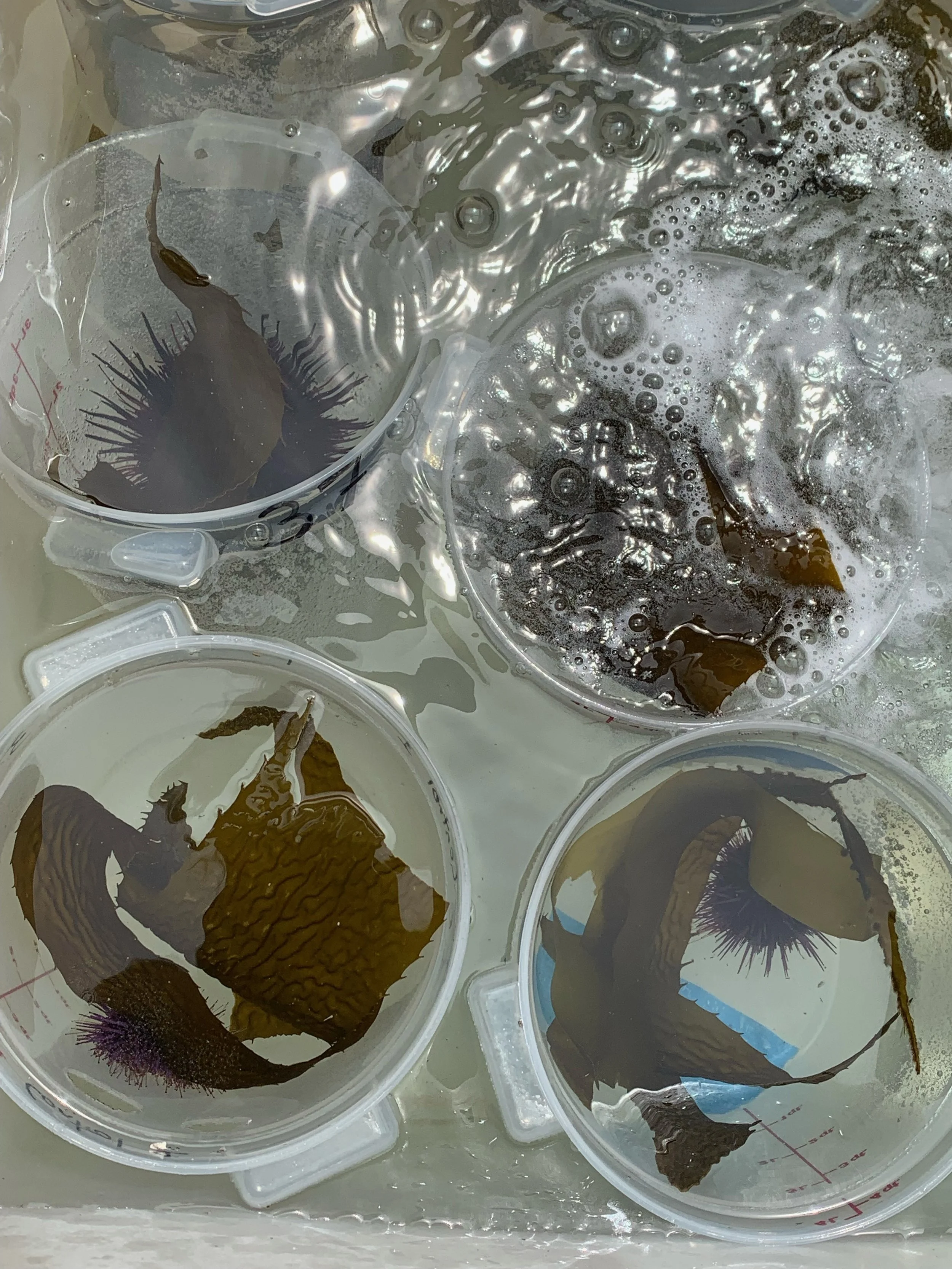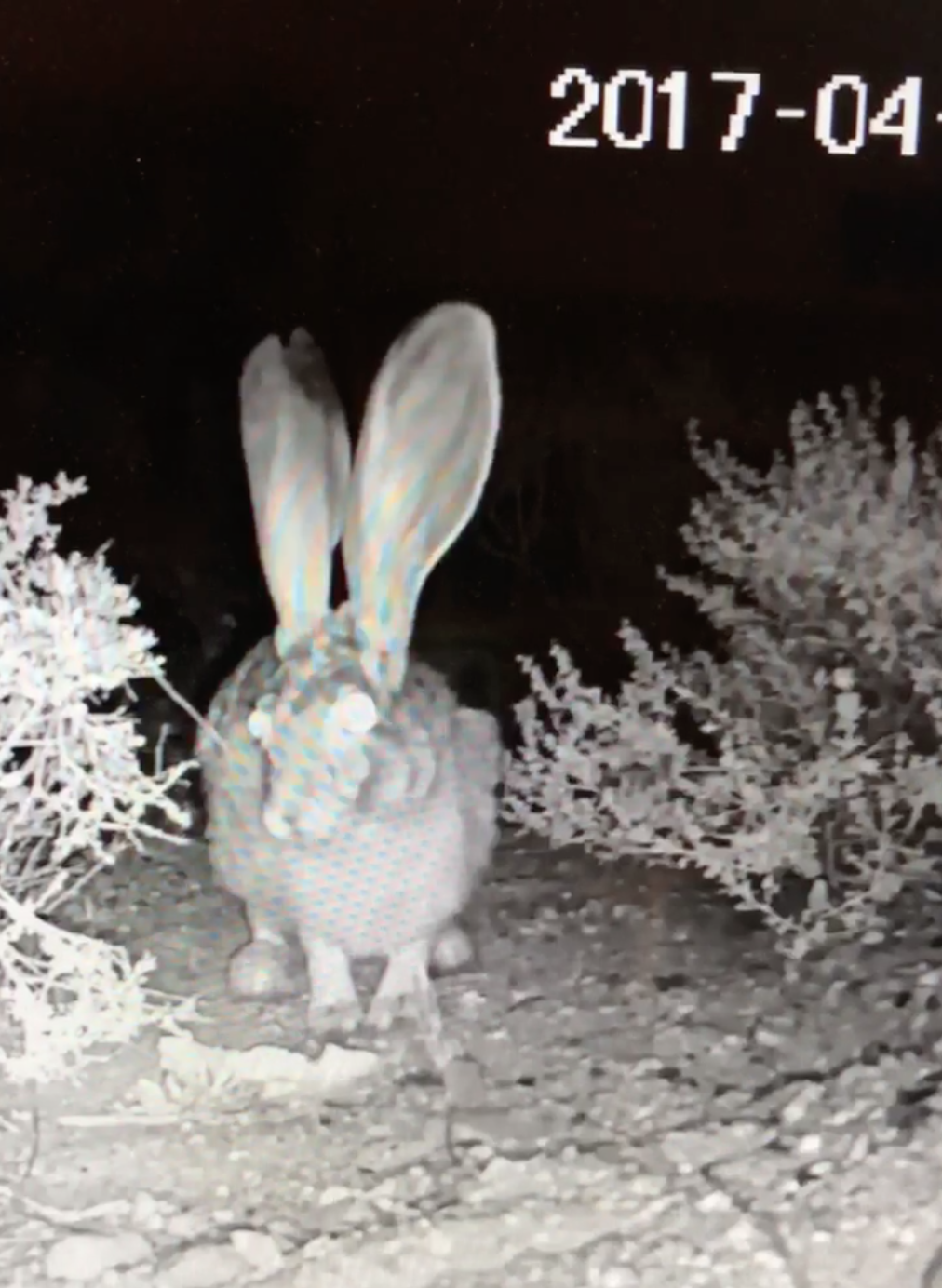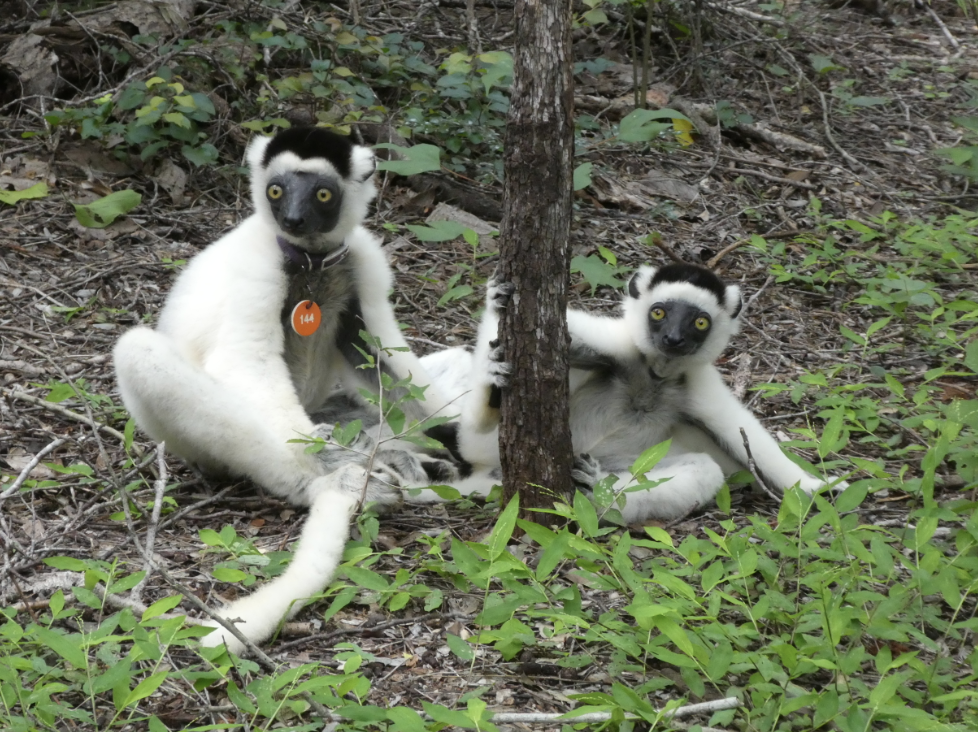RESEARCH
*
RESEARCH *
Publications
Korabik, Angela R., Dias, Suellen M., Grisby, Genece V., Grosholz, Edwin D. Increasing temperatures impact the reproduction of localized estuarine kelp populations more than invasive species. Marine Ecology Prog Series 744:33-51. September 5, 2024.
Macrocystis pyrifera responses to competition and an estuarine gradient.
June 2020 - September 2024
Collaborator: Angela R. Korabik
Funding: UC Davis Jastro-Shields Research Fellowship
Both giant kelp (Macrocystis pyrifera) and the invasive wireweed (Sargassum muticum) are rarely found in estuaries, but both occur in Tomales Bay at the northern end of the Point Reyes National Seashore. We are interested in assessing the effects of changing salinity and temperature conditions on giant kelp and wireweed reproduction and development. To achieve this, we are collecting giant kelp and wireweed propagules from several locations in Tomales Bay and culturing them in petri dishes to track their growth and survival. This research will help address questions regarding the specific factors that limit the intrusion of giant kelp and wireweed into bays and how giant kelp might respond to multiple extreme stressors.
The impacts of salinity and temperature on gametophyte growth and reproduction in wakame (undaria pinnatifida).
June 2021 - September 2024
Collaborator: Angela R. Korabik
Wakame (Undaria pinnatifida) is an invasive kelp from Japan that became established in LA Harbor in 2001. Since then, it has spread from harbor to harbor, and can now be found in ports from Ensenada, MX to San Francisco, CA. In 2018 and 2019, during the large amounts of rainfall California received that year, there were verbal reports that the amount of Wakame present in northern California was decreasing. Dr. Angela Korabik and I collected Wakame from San Francisco Harbor and brought it back to Bodega Marine Lab, where we cultured it under 5 different salinities and 2 temperatures to simulate the impacts of rising temperatures and fresher water on kelp development.
Projects
Collaborators: Steven Grodsky and Rebecca R. Hernandez
Solar energy contributes to global deep decarbonization and mitigates climate change by reducing greenhouse gas emissions from fossil fuels. However, displacive solar energy development is an anthropogenic driver of land-use and land-cover change, especially in desert ecosystems of the Desert Southwest. We investigated the response of desert kit fox (Vulpes macrotis arsipus) to an altered thermal landscape and habitat modification associated with ISEGS using a combination of camera trapping and geospatial analyses. We also used environmental sensors, camera trap arrays, field measurements, molecular analyses, and remote sensing to study effects of habitat alteration from ISEGS on a trophic system involving soils, Mojave milkweed (Asclepias nyctaginifolia), queen and monarch butterflies (genus Danaus), and avian predators and parasitoids/parasites of caterpillars to elucidate species-species and species-process interactions that inform mechanisms behind ecosystem response to solar energy development. Additionally, we studied the effects of human-modified habitats at ISEGS on pollinator populations. I presented an overview of these current projects, along with preliminary findings and future research directions at a Research, Scholarship & Creative Activities Conference in 2019.
Effects of solar energy development on the biosphere: an overview of Wild Energy initiative research projects in the Mojave Desert.
September 2017 - May 2019
Social behavior and conservation of primates.
June 2017 - April 2019
Collaborator: Meredith Lutz
Within conservation biology, scientists have tried to understand the link between various species-level traits and likelihood of extinction. For example, species with small geographic ranges, slow life history, large body sizes, and small population sizes are more likely to go extinct than their counterpart taxa. Within behavioral ecology, there is also recognition that some species are more resilient in the face of anthropogenic change, and behavioral flexibility has been suggested as a mediating mechanism. Yet, we don’t understand how this continuum of extinction risk relates to the continuum of behavioral flexibility. Such an understanding is critical to a more nuanced understanding of a species’ risk of extinction and thus the development of comprehensive conservation plans. To address these questions and related ones, the “PREdiCT” research project [Primate Research and Conservation Team] was being used. At any given time, there was between 15 and 25 undergraduate students reading primate literature to understand the behavioral flexibility of each primate species.




